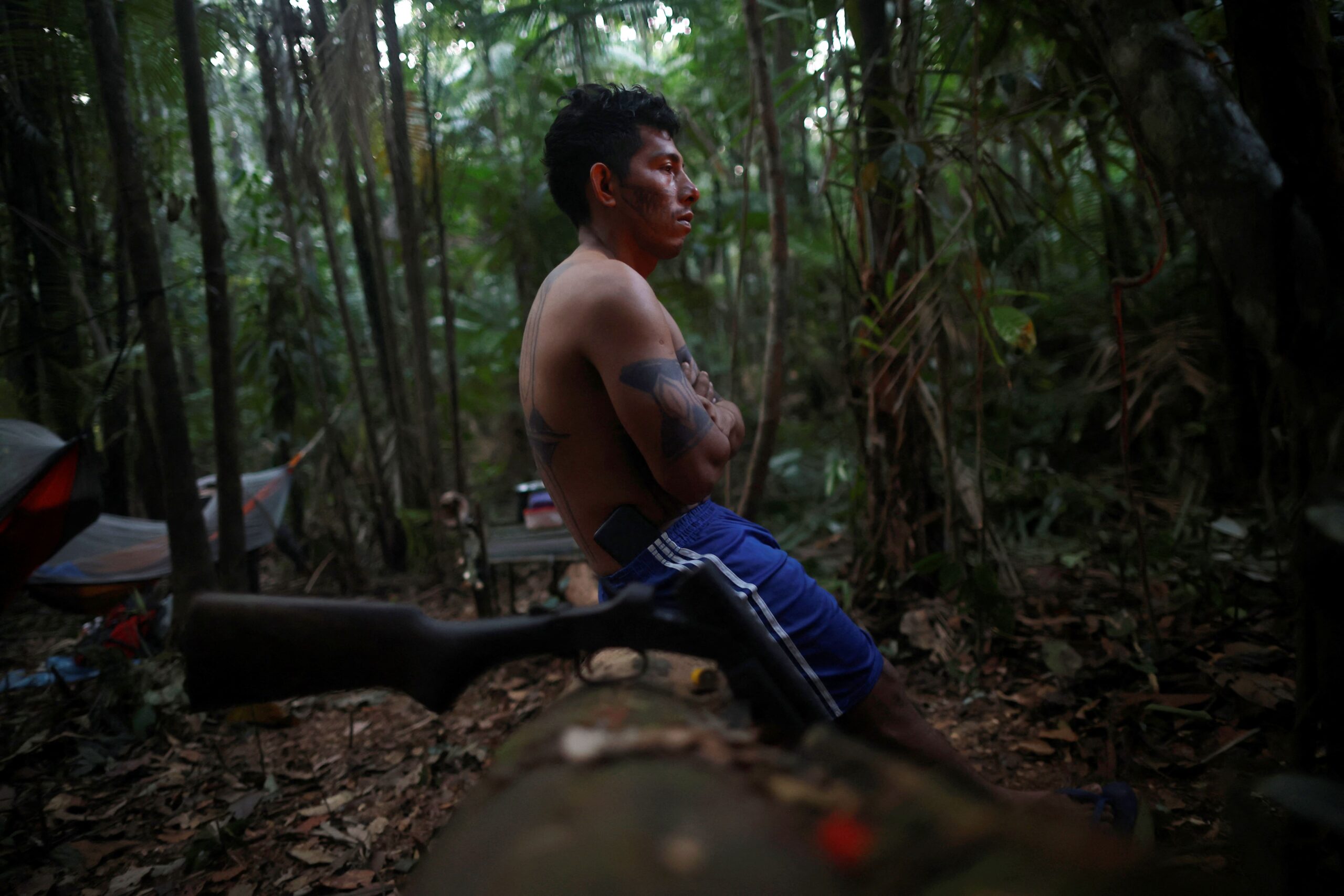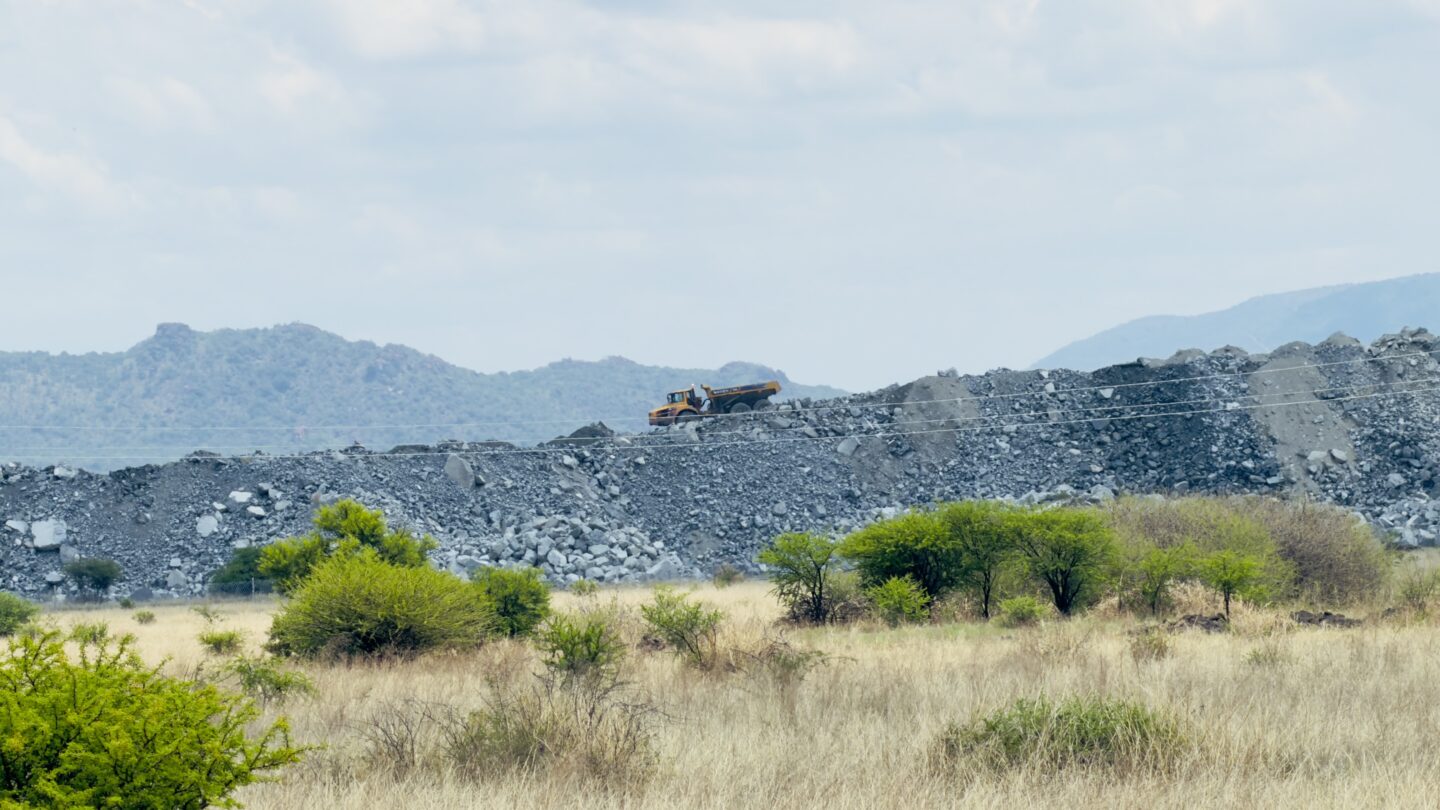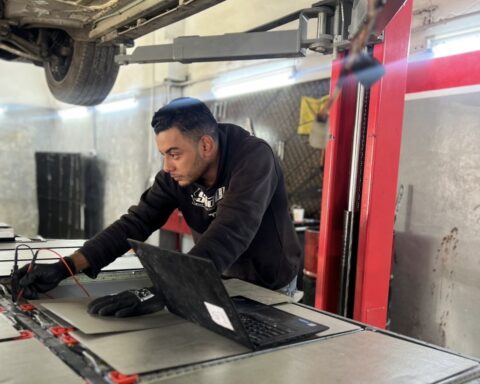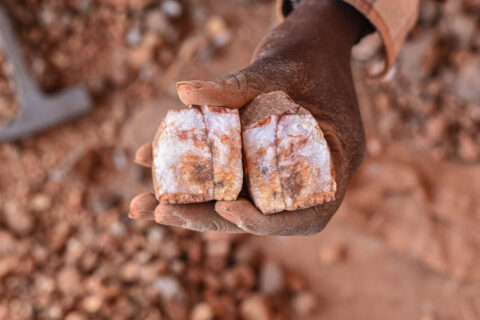“If we plan for environmental standards that would protect children, the most vulnerable in our society, we protect everybody. When we place the most vulnerable at risk, we place everybody at risk.”
From our collaborating partner “Living on Earth,” public radio’s environmental news magazine, an interview by host Steve Curwood with Robert Bullard, a Distinguished Professor of Urban Planning and Environmental Policy at Texas Southern.
Q&A: Robert Bullard Says 2024 Is the Year of Environmental Justice for an Inundated Shiloh, Alabama
Climate Change
With no COP30 roadmap, hopes of saving forests hinge on voluntary initiatives
Forest defenders disappointed by the lack of agreement on a roadmap to tackle deforestation at COP30 say voluntary initiatives and funding promises set in motion in Belém are at least a step in the right direction.
Indigenous people and campaigners hoped the first UN climate summit held in the Amazon would define a concrete plan for saving the world’s forests. But COP30’s “Global Mutirão” decision makes only passing mention of the COP28 target adopted by all countries to halt and reverse forest loss by 2030 – a goal data shows is way off-track.
A decision on cutting carbon emissions – part of the broader package of COP30 outcomes – also made short shrift of the issue, referring only to the “challenges in addressing drivers of deforestation” while also being “mindful of pursuing sustainable development and food security”.
“Our expectations were far higher than what this COP in the heart of the Amazon ultimately delivered,” Fernanda Carvalho, head of policy for climate and energy at WWF, told Climate Home News.
Panama’s head of delegation at the talks, Juan Carlos Monterrey, said in a social media post that “a Forest COP with no commitment on forests is a very bad joke”.
Off-course on ending deforestation
In the run-up to the talks, Brazil’s COP30 presidency made much of the Amazon venue, and President Luiz Inácio Lula da Silva called for negotiators to deliver a roadmap to end deforestation by the end of the decade, alongside another roadmap to transition away from fossil fuels.
The world is way off-track to meet the COP28 deforestation target, first set at COP26 in Glasgow in 2021. Forested areas the size of England were lost last year as agricultural expansion continued to fuel deforestation, according to a global assessment by experts and NGOs released just before the Belém summit.
But despite winning backing from all 56 members of the Coalition of Rainforest Nations and 27 European Union member states, a deforestation roadmap – like the roadmap to transition away from fossil fuels – was relegated to a voluntary initiative to be drawn up by the COP30 presidency in time for COP31 in Türkiye next year.
COP observers blamed the weak outcome more on a lack of political will than overt opposition, but some countries did balk at giving forests stronger support.
Argentina – an agricultural powerhouse – pushed back even on a brief reference to deforestation in the mitigation text, saying mention of the drivers of deforestation “should be analysed from a historical perspective” and take into account developing countries’ differentiated responsibilities.

“Better than nothing”
Yet while the results of the “Amazon COP” were “disappointing”, COP30 did summon up “both money and political will” from countries supporting broader efforts to end deforestation, said Toerris Jaeger, executive director of Rainforest Foundation Norway, an NGO.
Carvalho said the presidency’s voluntary roadmap initiative “is better than no signal on forests”, adding that what really matters is the inclusion of forest policies in national climate plans – something that is still lagging.
A WWF analysis found that of the 39 nationally determined contributions (NDCs) filed by September’s deadline – which accounted for 42% of the world’s forests – only Brazil explicitly commits to achieving zero illegal deforestation by 2030, although implying that legal deforestation could still occur. Just 14 of the NDCs set any forest-related targets.


Outside of the official COP process, which “failed to deliver anything meaningful on deforestation”, according to Felix Finkbeiner, founder of Germany-based NGO Plant-for-the-Planet, several voluntary funding initiatives were welcomed by campaigners.
European nations pledged cash to protect rainforest in Africa’s Congo Basin and aid traditional and Indigenous communities living in forested areas, while Brazil’s brainchild, the Tropical Forest Forever Facility (TFFF), also secured several donor promises of support.
Tropical forest fund takes off slowly
The TFFF, which aims to pay tropical countries that conserve their forests with income from financial investments, was also left out of the “Global Mutirão” decision after being featured as an option in an earlier draft.
And despite receiving pledges of funding, almost entirely from countries so far, there are questions over how the fund will operate in practice and whether it will secure the political and financial backing it needs.
“The funding model is realistic in principle”, said Chris Dodwell, head of policy and advocacy at Impax Asset Management – one of the financial firms involved in the fund’s design, adding that investors still needed information on the fund’s reporting process, how the debt will be structured and demonstrated results protecting forests.
“The reality is that the premier investment will only flow once you have got bonds that are being issued, with all of the detail and documentation that you need. The whole concept is always going to have this idea of building over time,” Dodwell told Climate Home.
John Kerry laments lack of fossil fuel transition in COP30 agreement
Still, the TFFF has already received pledges totalling about $7 billion from a handful of countries, though some of them are conditional on it reaching a threshold of support.
That dwarfs the $500 million disbursed by the Green Climate Fund (GCF) for REDD+ forestry projects since 2017, but remains short of the target set by Brazilian officials for the first year of $10 billion in pledges.
Some multilateral banks are considering an investment in the fund, while some donor countries involved in its design – among them Canada, the United Arab Emirates and China – are yet to pledge a contribution.
New Congo Basin finance
In a major financial boost, European nations also pledged to raise $2.5 billion over the next five years for the protection of the Congo Basin, the second-largest rainforest on the planet and the last remaining strong carbon sink.
The pledge scaled up a previous $1.5-billion initiative launched at COP26 in Glasgow to protect the Congo Basin, which trained local populations in sustainable management, helped them secure land rights and funded protected areas, according to implementation reports.
Signatories include France, Germany, Norway, Belgium and the UK, as well as multilateral banks, including the World Bank, African Development Bank, Global Environment Facility and the GCF.
In a similar voluntary initiative, the UK, Germany, Norway and the Netherlands renewed a $1.8-billion pledge to scale up land tenure for Indigenous people and Afro-descendent communities by 2030, which was one of the main Indigenous demands at COP30.
Rachel Pasternak, global lead for forests at The Nature Conservancy, said that these voluntary initiatives are “steps in the right direction”, despite the formal negotiations lagging behind on forests. “While we need to do more, given the geopolitical realities that we’re in, there’s still a lot to celebrate.”
The post With no COP30 roadmap, hopes of saving forests hinge on voluntary initiatives appeared first on Climate Home News.
With no COP30 roadmap, hopes of saving forests hinge on voluntary initiatives
Climate Change
South Africa’s platinum mine dumps get a second look as clean energy lifts demand
Besides the dust that cloaks pathways, windowsills and gardens, the towering grey heaps of discarded rock are another unwelcome reminder of the platinum mine next door to the South African township of Chaneng.
In and around the city of Rustenburg, the low-grade platinum ore that has made South Africa the world’s top producer of the silvery metal creates massive waste piled in large rocky heaps known as tailings. For every tonne of metal extracted, hundreds of tonnes of waste rock is left behind in huge piles.
The transition to cleaner energy system is expected to push up global demand for platinum group metals (PGM) – which include palladium and other precious metals, as well as platinum. They are used in hydrogen-related technologies such as fuel cells and electrolysers that split water molecules as well as in hybrid cars that need catalytic converters to curb pollution.
To secure supplies, mining companies are starting to make use of what was once considered waste.
Efforts to green lithium extraction face scrutiny over water use
Reprocessing mine tailings using new technology can be a more sustainable form of producing minerals and metals needed for the energy transition because it is expected to reduce the size of existing waste heaps and boost output without the need to open new mines, which can cause more environmental destruction and community displacement.
“Tailings reprocessing offers genuine benefits, reducing pressure for new mining [and] addressing existing environmental liabilities,” said Mathikoza Dube, an expert on critical minerals based in Rustenburg.
“It offers the world a pathway to secure supplies of energy transition minerals while remediating waste that’s contaminated communities for generations,” Dube added, cautioning it is not a “magic solution” and should be approached in a way that ensures local communities benefit.
In Chaneng, where the tailings dumps loom over backyards, residents are wary.
“Same theft in new clothes”
They fear the plan to reprocess mining tailings at the neighbouring mine – operated by South African platinum miner Sibanye-Stillwater – is being dressed up as sustainable when in reality it will mean more contamination, blasting, dust and no end to their community’s problems.
Despite decades of mining, unemployment in the area remains high, many people say they never received compensation for the loss of their agricultural land and most households still lack access to basic sanitation infrastructure.
Water testing carried out by SRK Consulting in 2009 found elevated nitrate levels exceeding World Health Organization guidelines in community boreholes, and health practitioners document dramatic increases in respiratory diseases.
“Now they want to dig up the waste piles and call it progress? Show us the ownership papers. Show us the rehabilitation plan. Otherwise, it’s the same theft in new clothes,” said Johannes Kgomo, a community leader.
South Africa’s mining legislation requires that 26% of mining assets are held by historically disadvantaged people including Black South Africans, and Chaneng residents are demanding a stake of 15% to 30% in any tailings operation on their land, allowing them to have a say in how the business is run.
They say that should be granted to them as compensation for the health and environmental problems they have endured as a result of the mine.
The community is also demanding comprehensive water testing and treatment, adequately resourced clinics with respiratory specialists, compensation for destroyed agricultural land, infrastructure repair and long-term health monitoring.
“We are not asking for handouts,” said Gideon Chitanga of the National Union of Mineworkers, which often takes the side of local communities in disputes with companies.
“These people have already paid with their health, their water, their land. That contamination, that suffering – that is their investment. Now they want returns and decision-making power,” Chitanga added.
A spokesperson for Sibanye-Stillwater declined to comment.
A mining industry source, who asked not to be identified, said conversations with community members were ongoing.
“Nobody disputes these communities have suffered. The question is how to structure ownership in a way that’s legally sound, financially viable, and genuinely empowering,” the source said.

New technology boosts metal recovery in waste
New reprocessing technology has made it economically viable to extract platinum group metals from tailings, and several operations are already underway in South Africa’s platinum mining belt, around the city of Rustenburg.
Sibanye-Stillwater already operates multiple retreatment facilities, processing thousands of tonnes of waste ore monthly.
Another South African miner Tharisa processes chromite from PGM tailings commercially. Chromite is used to obtain chromium, a metal used in the manufacture of wind turbines and some energy storage batteries.
“Historical tailings facilities contain economically viable concentrations that were unrecoverable with older technology,” said Leo Vonopartis from the University of the Witwatersrand’s BUGEMET research programme, which studies the geology of South Africa’s Bushveld Complex mining belt.
Tailings in the area around Rustenburg can contain up to 2.5 grammes per tonne of combined platinum, palladium and rhodium – along with chromite. Vanadium, cobalt and rare earth elements have also been found.
At current prices, which have rallied this year, it is worth extracting the rare metals, despite the challenges.
Breaking with the cycle of extraction and injustice
“The technology exists. The economics work. The question is whether we can structure these projects to genuinely benefit the people who have paid mining’s costs,” a spokesperson for one mining company said, asking not to be named.
Without that, local expert Dube said, the reprocessing of tailings is scarcely better than other forms of mining.
“Reprocessing tailings does not erase the damage that created them. If it is structured as extraction by another name – where companies profit and communities remain marginalised – we have just found a new way to perpetuate old injustices.”
Australia’s COP31 Co-President vows to fight alongside Pacific for a fossil fuel transition
Gesturing toward the tailings dam visible from her yard, Noxolo Mthembu recalls the days when her vegetable patch used to feed the family.
“We used to grow spinach, tomatoes, pumpkins,” she told Climate Home News. “Now nothing grows. The dust kills everything. My children have asthma. My husband died of lung disease at 54.”
Like many of her neighbours, she says any new cycle of mining activity – this time in the name of the clean energy transition – must not repeat the past.
“Show me the ownership papers with our names. Show me the water treatment plant. Show me the clinic with enough staff. Then I will believe this time is different.”
The post South Africa’s platinum mine dumps get a second look as clean energy lifts demand appeared first on Climate Home News.
South Africa’s platinum mine dumps get a second look as clean energy lifts demand
Climate Change
Indigenous Climate Governance: Reclaiming Ecological Sovereignty and Redefining Climate Justice
Climate governance, how societies organize decision-making around climate change, is often framed through Western political and legal structures. These models tend to prioritize human-centric policies rooted in concepts such as property, ownership, and nation-states. Within this framework, the environment is often reduced to a resource to be managed, extracted, or commodified. In contrast, Indigenous climate governance offers an entirely different paradigm, one that is not about dominion over land but about reciprocal relationships, sacred obligations, and the recognition of ecological sovereignty.
It is essential to emphasize that Indigenous Peoples do not require validation, endorsement, or recognition from non-Indigenous institutions to develop, uphold, or practice their governance systems. These frameworks of law and stewardship are rooted in original relationships to homeland ties that precede and transcend colonial boundaries.
The days are numbered for systems that invite Indigenous Peoples to the table only as tokens or symbolic presences, while denying their voices the space and authority to shape outcomes. Indigenous governance is not a matter of permission from others; it is the lived practice of self-determination that every living being on Mother Earth inherits and is responsible for.
What is Indigenous Climate Governance?
Indigenous climate governance is a holistic system of law, custom, and responsibility that places interdependence at its core. It reflects millennia of Indigenous stewardship and an understanding that humans are not the rulers of ecosystems but participants within them. Governance is not defined solely by human authority, but by respect for the natural laws that sustain all life. This worldview recognizes that the land, waters, plants, animals, and spiritual forces all carry agency and rights. Humans are woven into this vast web of relations, with responsibilities of reciprocity and care.
At its foundation, Indigenous climate governance protects the autonomy and vitality of place, which is often referred to as ecological sovereignty. Decision-making is collective, inclusive of all living beings, and guided by natural law rather than anthropocentric legal constructs. In this way, governance is not about imposing human will but about aligning with the rhythms, responsibilities, and teachings of the natural world.
Climate change is, at its root, a crisis of ecological imbalance. Indigenous Peoples who have retained rights to stewardship through origin relationships to place, space, and homeland understand this balance as sacred. They are best positioned to speak with, rather than for, their human and non-human kin regarding the health and well-being of these homelands. This is where the difference between Indigenous and non-Indigenous governance lies: the former is grounded in responsibilities to life systems. At the same time, the latter too often assumes authority to determine for others. True governance is not about control but about nurturing the self-determination of people, lands, waters, and ecosystems.
How Indigenous Climate Governance Differs from Western Models
Western climate governance is profoundly influenced by colonial legacies that prioritize property rights, commodity extraction, and human control over land and water. Such frameworks often fragment ecosystems and communities by enforcing borders and legal regimes that treat nature as something to be divided, owned, and exploited. Indigenous governance rejects these constructs and instead insists on a worldview that frames the Earth as a living relative, with inherent rights and sovereignty.
This worldview demands that human actions serve to maintain balance and harmony in ecosystems, rather than disrupt them. Governance is viewed as a set of ongoing relationships founded on care, respect, and mutual responsibility, rather than as systems of domination and control. By refusing to fragment ecosystems with artificial legal and political borders, Indigenous climate governance opens pathways to climate justice that are inclusive, life-sustaining, and grounded in ecological stewardship.
For non-Indigenous Peoples, this requires a willingness to step aside and listen, to witness the story of life being shared through Indigenous knowledge and practice. It means recognizing that democracy itself must be redefined, not as a system of power over others but as a philosophy of coexistence, rooted in the laws of nature. These are the laws that governance is meant to uphold, not jeopardize. Colonization has had the opposite effect: undermining natural law to benefit the few at the expense of the many.
The Building Blocks of Ecological Sovereignty
Ecological sovereignty is the right of Indigenous Nations and the ecosystems they steward to manage and protect their lands and waters in alignment with their laws and values. It is rooted in kinship relations, where plants, animals, waters, and lands are recognized as relatives with their agency to thrive or suffer. This principle is sustained by natural law, which acts as a living constitution that structures coexistence, respect, and accountability among all beings.
Relational governance is another key element. Rather than separating human interests from ecological systems, it binds humans and non-humans together in an interdependent framework of stewardship and decision-making. Cultural protocols and ceremonies ensure that governance remains responsive to the cycles of nature and ancestral teachings, grounding decisions in gratitude, responsibility, and humility. These building blocks together create a framework for sovereignty that extends beyond political recognition into the living fabric of ecosystems.
The Indigenous Constitution of the Land: Laws and Regulations of Peace and Harmony
In many Indigenous Nations, governance of place is carried out through a constitution that is not confined to written text, but is encoded in ceremony, storytelling, and the role of law keepers. These laws emphasize peace, mutual respect, and the ongoing balance of life. Every action must consider its impacts on the land, waters, climate, and all beings. Reciprocity is essential; humans must return to the Earth what they take, ensuring that ecosystems regenerate and remain vibrant for future generations.
This constitution also recognizes the agency of non-human beings, affirming their right to exist, flourish, and govern their own lives. Governance is inclusive and collective, ensuring that the voices of Elders, youth, women, and the land itself are respected and valued. For example, laws may mandate sustainable harvesting, seasonal restrictions, ceremonies of permission and thanksgiving, and rites of care when ecosystems are vulnerable. These protocols are not static but adaptive, responsive to the cycles of place, and always rooted in harmony and respect.
Why Indigenous-Led Climate Governance Matters
Indigenous climate governance offers a profound alternative to Western models of climate decision-making. It is not about control, but coexistence. This shift is critical in addressing the climate crisis because it directly challenges the colonial systems that have fueled ecological destruction and excluded Indigenous Nations from decision-making. By centring Indigenous leadership, governance becomes about multidimensional wellbeing: ecological, cultural, spiritual, and communal health.
It also restores natural laws that protect biodiversity, climate stability, and the rights of all beings. Where Western systems often respond reactively to crises, Indigenous governance emphasizes proactive care, long-term thinking, and intergenerational responsibilities. By embracing these principles, climate justice transforms into a journey toward genuine equity, recognizing Indigenous Nations as sovereign stewards of their lands and waters, with authority that transcends human political boundaries and includes all life.
Blog by Rye Karonhiowanen Barberstock
Image Credit: Igor Kyryliuk and Tetiana Kravchenko, Unsplash
The post Indigenous Climate Governance: Reclaiming Ecological Sovereignty and Redefining Climate Justice appeared first on Indigenous Climate Hub.
Indigenous Climate Governance: Reclaiming Ecological Sovereignty and Redefining Climate Justice
-
Climate Change4 months ago
Guest post: Why China is still building new coal – and when it might stop
-
Greenhouse Gases4 months ago
Guest post: Why China is still building new coal – and when it might stop
-
Climate Change2 years ago
Spanish-language misinformation on renewable energy spreads online, report shows
-

 Greenhouse Gases1 year ago
Greenhouse Gases1 year ago嘉宾来稿:满足中国增长的用电需求 光伏加储能“比新建煤电更实惠”
-
Climate Change Videos2 years ago
The toxic gas flares fuelling Nigeria’s climate change – BBC News
-

 Climate Change1 year ago
Climate Change1 year ago嘉宾来稿:满足中国增长的用电需求 光伏加储能“比新建煤电更实惠”
-

 Carbon Footprint2 years ago
Carbon Footprint2 years agoUS SEC’s Climate Disclosure Rules Spur Renewed Interest in Carbon Credits
-
Renewable Energy5 months ago
US Grid Strain, Possible Allete Sale













